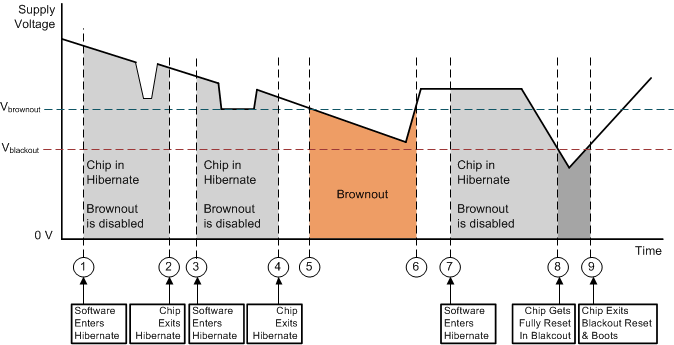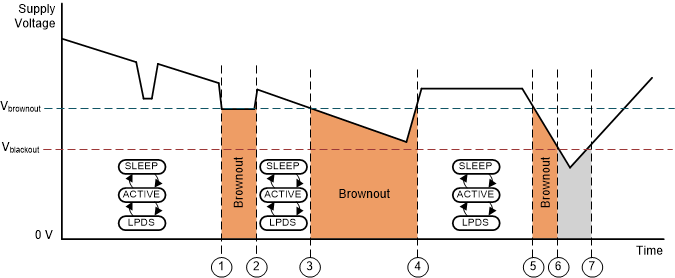ZHCSOK7B March 2020 – May 2021 CC3130
PRODUCTION DATA
- 1 特性
- 2 应用
- 3 说明
- 4 功能方框图
- 5 Revision History
- 6 Device Comparison
- 7 Terminal Configuration and Functions
-
8 Specifications
- 8.1 Absolute Maximum Ratings
- 8.2 ESD Ratings
- 8.3 Power-On Hours (POH)
- 8.4 Recommended Operating Conditions
- 8.5 Current Consumption Summary
- 8.6 TX Power Control
- 8.7 Brownout and Blackout Conditions
- 8.8 Electrical Characteristics for DIO Pins
- 8.9 Electrical Characteristics for Pin Internal Pullup and Pulldown
- 8.10 WLAN Receiver Characteristics
- 8.11 WLAN Transmitter Characteristics
- 8.12 WLAN Transmitter Out-of-Band Emissions
- 8.13 BLE/2.4 GHz Radio Coexistence and WLAN Coexistence Requirements
- 8.14 Thermal Resistance Characteristics for RGK Package
- 8.15
Timing and Switching Characteristics
- 8.15.1 Power Supply Sequencing
- 8.15.2 Device Reset
- 8.15.3 Reset Timing
- 8.15.4 Wakeup From HIBERNATE Mode
- 8.15.5 Clock Specifications
- 8.15.6 Interfaces
- 8.16 External Interfaces
- 9 Detailed Description
- 10Applications, Implementation, and Layout
- 11Device and Documentation Support
- 12Mechanical, Packaging, and Orderable Information
8.7 Brownout and Blackout Conditions
The device enters a brownout condition when the input voltage drops below Vbrownout (see Figure 8-4 and Figure 8-5). This condition must be considered during design of the power supply routing, especially when operating from a battery. High-current operations, such as a TX packet or any external activity (not necessarily related directly to networking) can cause a drop in the supply voltage, potentially triggering a brownout condition. The resistance includes the internal resistance of the battery, the contact resistance of the battery holder (four contacts for 2× AA batteries), and the wiring and PCB routing resistance.
When the device is in HIBERNATE state, brownout is not detected. Only blackout is in effect during HIBERNATE state.
 Figure 8-4 Brownout and Blackout Levels (1 of 2)
Figure 8-4 Brownout and Blackout Levels (1 of 2)
 Figure 8-5 Brownout and Blackout Levels (2 of 2)
Figure 8-5 Brownout and Blackout Levels (2 of 2)In the brownout condition, all sections of the device (including the 32-kHz RTC) shut down except for the Hibernate module, which remains on. The current in this state can reach approximately 400 µA. The blackout condition is equivalent to a hardware reset event in which all states within the device are lost.
Section 8.7.1 lists the brownout and blackout voltage levels.